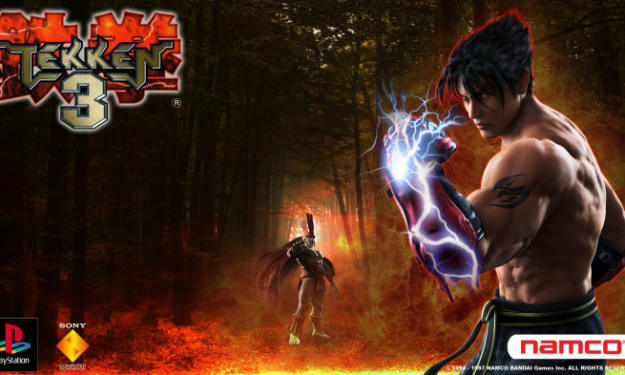Tekken History: The Making of Tekken
On this trip, we caught wind of a new hardware system being developed called System 11. It was the little brother of the more robust System 22. Lower priced and less powerful, it would help bring 3D games to the American street market. This marked the beginning of a special relationship with Sony that would become a double-edged sword

Game Development Begins
Within weeks of returning to the states, I received an obscure videotape of 3D modeling tests. Rotating blocky bodies and heads, along with 2D backgrounds. I was encouraged because at least it had an inkling of being a fighting game. This was the dawn of Tekken.Here are some photos from an experimental motion capture process. I’m not sure for which version of Tekken these were taken, but it’s a safe bet they are not later than Tekken 3.
There wasn’t a lot of time for iteration and experimentation. The time difference between California and Tokyo worked well. Kohei sent me projects and questions from producer Hajime Nakatani via fax at the end of each day. They were on my desk each morning and I worked on them while they slept in Japan. My evening phone call with Kohei would discuss my return fax and any outstanding issues.
Character development moved fast. Most all of the concept characters were used in the final game. My favorite was Marshall Law because I named him (glad Mr. Nakatani liked it) and he bore a striking resemblance to Bruce Lee.The real genius of Tekken was in the fighting game engine. It added a whole new level of control and depth in fighting games. Tekken was designed to encourage more close fighting than its contemporaries.
Tekken (“Iron Fist”) was the first video game with a Japanese name to succeed in the US market. I argued against the name, but the team loved it. It’s a good thing the game was a hit in America or else the foreign name would have been viewed as a marketing faux pas.
Tekken was released in December of 1994. A remarkable feat when considering in late 1993, testing and character modeling on a new 3D hardware was still in the experimental stage.
Unlockable Characters
Tekken included a system to unlock secret characters. To unlock all characters, players needed to defeat all opponents with each default character. New characters kept the game fresh and contributed to long-term retention.
In Tekken 2, using the game’s internal clock I devised a “Time Release System”. It helped incentivize game operators to purchase games sooner rather than later. The systematic release of additional characters was based on the length of time the game was in “operation”. This meant “on location” and plugged in. Those games had a marketing advantage over games still in the box. Locations with more of the added characters benefitted due to the huge interest in new characters. In contrast, the Japanese market used this clock differently. They synchronized the timing of each new character released, regardless of how long a game was in operation. I believed this had marketing benefits for the console market, but not for arcades.Thanks for reading! If memory serves me right, Marshall Law was originally named Forest. At the time, who knew there would be sequels? I suggested the name Marshall Law because it was a play on the term “martial law”. Quoting Wikipedia, “martial law is the imposition of direct military control of normal civilian functions of government, especially in response to a temporary emergency such as invasion or major disaster, or in an occupied territory”. I also thought of both U.S. Marshall (law enforcement agency), and a town marshall, the keeper of the peace in western movies. Familiar with the name Marshall used as both a first and last name, I thought it was perfect. And fortunately, Mr. Nakatani (producer) approved it.
Mr. Ishii designed an absolute masterpiece. At the outset of joining Namco in 1993, I saw potential for a fighting game to compete with Mortal Kombat and Virtua Fighter. As I read the initial design document, and the four-button arms/feet concept, I thought it was brilliant. But if not for the System 11 3D hardware (less expensive version of System 12 and a precursor to PS1), I question if Tekken would have been as successful.





Comments
There are no comments for this story
Be the first to respond and start the conversation.